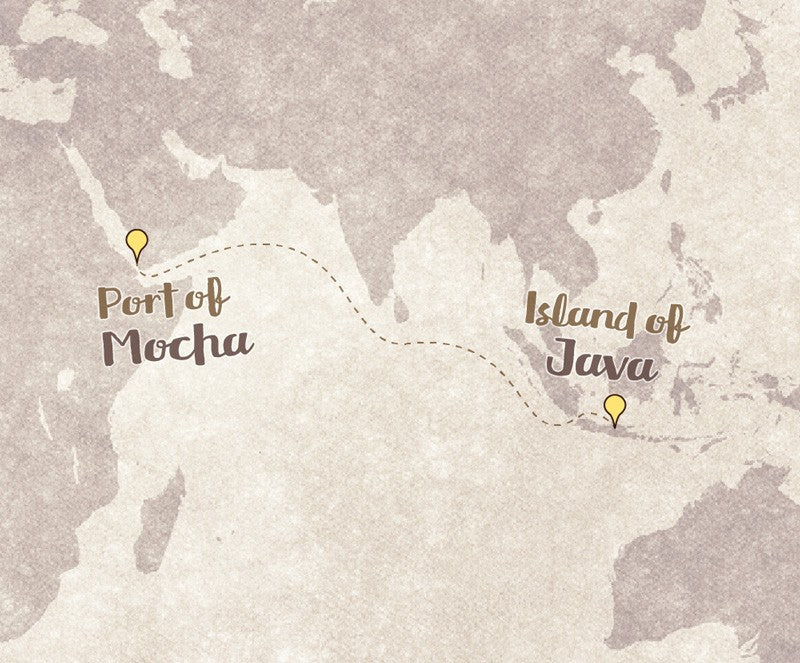Mocha Java
If you’ve ordered our classic Mocha Java in the past few days, you may have spotted a difference in our packaging. Our new label design features a map that illustrates the story behind Mocha Java. In this blog post, we’re going to give you a little history lesson—so pour a cup of java (or grab yourself a mocha?) and have a seat.
While the word “mocha” may also refer to your favorite chocolate-y drink, that is not what we’re referring to in today’s post. Mocha Java is a historic blend of two origins an ocean away from each other: Indonesia and Yemen.

The History of Mocha Java
Back in the 1400s to 1600s, the majority of Europe’s coffee intake came out of the Red Sea, from the Port of Mocha [Makha or Mokha]. This coffee was grown in the country of Yemen, but was referred to by the name of the port from which it came. In the Pacific Islands, it was the same story. Most Indonesian coffee was coming out of a port on the island of Java, controlled by the Dutch East India Trading Company. This led to the term “java”, which has remained as slang for coffee to this day.
These two ports caffeinated most of the coffee-drinking world in those days, and trading ships passed through both on the same trip. Although 5,000 miles separated them, coffee from Java and Yemen lived together on the sailing vessels that made their way across the Indian Ocean and back to Europe. These two origins came together as the very first blend in the world of coffee, and it’s a combination that roasters continue to emulate.
Mocha Java Today
These days, your typical Mocha Java has a few slight variations. Most roasters (and coffee enthusiasts) prefer Indonesian coffee to be sourced from Sumatra, the next island over from Java. On the Middle Eastern side, buyers will often source their “mocha” from the African country of Ethiopia, across the Red Sea from Yemen.
This is the case for our own homage to Mocha Java. For the Thanksgiving Coffee Mocha Java blend, we source our “java” from farmers in the the Takengon region of Sumatra, Indonesia. Our “mocha” is a natural-processed coffee that comes from farmer cooperatives in Yirgacheffe, Ethiopia. Our Mocha Java is a coffee that we’ve perfected over decades of roasting, and we strive to maintain its consistency.
The history of Mocha Java is a history of the coffee world as a whole. The coffee industry has changed significantly over the past five centuries, and we love looking back and researching where it all came from. Next time you brew up a cup of our Mocha Java, take your time drinking it, because you are sipping a truly historic coffee.
Mocha Java, Deconstructed
Now that you know the background of the Mocha Java, you have the opportunity to create your own. Our organic Sumatran Coffee is available in two roast colors, and we have three different organic Ethiopian coffees that you can choose from online. You can mix up the “mocha” and “java” to create your own perfect blend.



